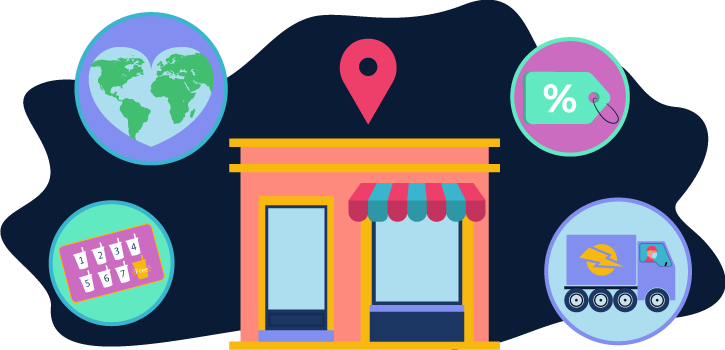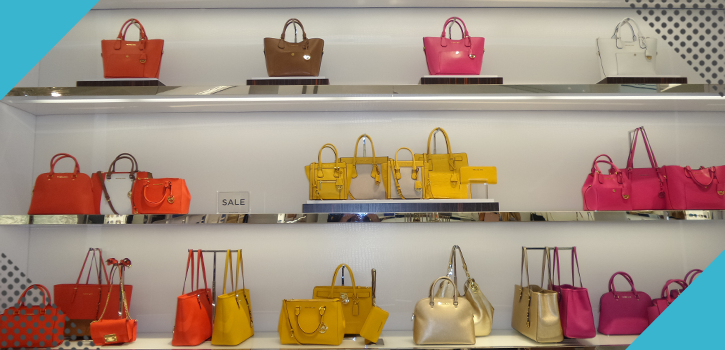As you probably know, the 2020 edition of Paris Retail Week was fully digitised and broadcast on its digital platform, Paris Retail Week Connect. In view of Covid-19 and the prevention measures devised to contain and manage the current health emergency, it was decided to reinvent the event so as to ensure the health of all those involved.
Despite the new format, David Mingeon, Deputy Managing Director of Havas Paris, upheld the tradition of revealing the results of the Shopper Observer study. This year’s study offered stakeholders the opportunity to learn more about the major trends characterising new consumer behaviour since the health crisis. 58% of consumers believe that the health crisis will have a positive impact on the way we consume and 81% are ready to abandon a brand if it no longer shares their values. It would seem that this new era is speeding up consumption processes. So, what will this mean for the retail world?
A, B, C, easy as 1,2,3: discover our latest eBook
If you remember, last year David Mingeon said that “Retailers are being forced to change the way they work.” A sentence that will take on even more meaning from now on.
What are consumers doing differently? Shopping more locally, more responsibly? Read all about it here!
Will the return to local consumption mean the end of big brands?
The health crisis has strengthened the desire for proximity and to consume more local, artisanal products. Consumers are once again putting their trust in local shops. In fact, 85% of American consumers say they are ready to “consume more locally” and 89% want to turn more towards products that are not mass-produced. Consuming locally has become a genuine way of life and is seen as a guarantee of quality, allowing us to reconnect with the values of authenticity.
Local consumption, therefore, is becoming increasingly attractive and, for consumers, is a guarantee of two important factors: eco-friendliness and transparency. A fact that has not escaped the attention of big brands, who now also feel obliged to get in on the act.
However, there is still a fly in the ointment. ‘Authentic’ doesn’t come cheap, and 60% of American consumers believe that the prices of these items are still much higher than big brand products. Will local consumption ever be able to satisfy every consumer?
But still, the subject raises plenty of questions: does the phenomenon of local consumption mean the end of mass domestic consumption? Could this be the beginning of the end for big brands like Nike, Coca-Cola and Nutella? Whatever happens, this may be the view of the majority of consumers. Today, 58% of people say they are ready to do without big national and international brands.
However, consumers are still buying industrial products, and this is something of a paradox. The proof? Nutella recruited more than a million new customers during lockdown! So, what’s really going on?
Whatever it is, this is a huge challenge for big brands which, so far, had been able to sit back on their laurels. It’s now time for big brands to get closer to their customers!
Impatience and awareness are speeding things up
Let’s start with the figures: 65% of American consumers are willing to pay more for a product that is available immediately, and 79% are willing to switch brands for an equivalent product that is available faster. So, speed of access to products is becoming a determining factor of the offering. One in three consumers use fast delivery offers, with rapidly available purchases making a big difference to them.
The ideal delivery time for an online order is 24 to 48 hours. A requirement that imposes major logistical challenges on retailers. Consequently, brands are competing to reduce the time between order taking and delivery. But these new methods of consumption, caused by the desire for immediacy, are not without consequences for the planet.
What about the environment? The faster the delivery, the greater the carbon impact. Few actors today are taking action to ensure truly responsible deliveries. In fact, 71% say they have a guilty conscience when it comes to fast deliveries. As regards consumers, however, the trend is somewhat different. Some may be aware of the environmental and social consequences of their choices, but will they be ready to accept a higher price or ecological offsets to compensate for the urgency of their deliveries?
The success of several new actors in the online fashion world, in particular, does testify to the ecological awareness of certain consumers.
Reversing current trends in order to stand out and reinvent a sector is a stance that undoubtedly works for some brands and some targets, and in any case has the merit of making people think about new ways of consuming and about their own impact on the planet.
A story of loyalty, disloyalty and values…
“Brands and retailers should never forget that consumption means sharing an intimate, balanced relationship and that more than ever, the values defended by brands appear to be the best lever of loyalty.”
David Mingeon, Deputy Managing Director, Havas Paris.
Consumers are always looking for something new. As a result, the concept of loyalty doesn’t seem to be as important as it once was. 57% of American consumers feel that loyalty programmes are all the same. There are many reasons that push a consumer to be disloyal to a brand: quality issues, price, or the wish to discover new things.
Retaining a customer is no longer simply about creating a feeling of being “rewarded”, it also means creating a feeling of recognition and belonging.
The question to ask is no longer “what kind of loyalty programme should I offer?”; it is, “how do I engage with my customers so as to retain them long term?”. For this, loyalty must look beyond mere transactions.
Brands today are trying to exploit new avenues such as ultra-transparency, making data understandable and monetizable by the consumer. In the near future, DNA tests may also start making a big appearance in the retail world. Already, 28% of American consumers are willing to share their DNA with brands to gain access to tailor-made products.
The concept of anti-consumption marketing
“Consume less but better” is a phrase that often crops up. Anti-consumption is a phenomenon that emerged before the crisis and has accelerated ever since. It is all about consumers no longer wanting to consume as much as they did. In particular, 28% of Americans feel they are consuming less than they used to, and 55% of French people think that overconsumption could lead to a collapse in our civilisation. And Covid-19 could be just the beginning.
This ‘trend’ gives people ideas and has not escaped the notice of brands and retailers, who are doing their best to play on transparency while inviting their customers to consume less.
What if we were to rethink the way we consume? To this end, Patagonia, a brand of eco-designed technical clothing for mountain sports and surfing, has taught us a valuable lesson in life: that it’s not all about delivery, but about adopting eco-friendly measures. What the brand actually wants to offer are solutions to overconsumption. With its “Worn Wear” movement, the Californian brand is offering consumers the opportunity to come and repair their products so as to extend the lifespan of their clothes. Great idea, right?
So as you can see, faced with receptive and environmentally-aware consumers, the fact of playing on their fears by talking about an uncertain future is a good way to sell more. 42% of consumers feel much closer to brands committed to avoiding excessive consumption. Judging by the explosion of young beauty and well-being brands, for example, which focus on packaging-free products, on refills to reduce consumption of disposable plastic, and so on, the trend seems to be gradually gaining ground.
Whether this is a genuine value or a trend is not yet clear, because the line between them remains blurred for brands, for whom there is no room for error.
What are neo-bazaars all about?
Joom, Shein, Aliexpress, Wish… You know what we’re talking about. We’re pretty sure you’ve all ordered something from one of these brands. What could be better than a set of 10 penguin cable protectors for less than €3 to start the day off right? Discounts are a big thing with consumers these days.
It’s about “shopping for pleasure”: that feeling of having more purchasing power and more accessible choices. As proof, 80% of Americans say they sometimes just need to switch off and treat themselves to a new purchase to relieve frustration. Take Wish, for example, which was worth an estimated 25 to 30 billion dollars when it arrived on Wall Street. This example clearly illustrates how 81% of consumers enjoy the feeling of getting a bargain with inexpensive products.
With Covid-19 as an amplifier of pre-emerging trends, 2020 was the year that brought all these challenges together, with consumption becoming faster, but also more local and more responsible.
“The results of the 2020 Shopper Observer study have revealed a trend that, while already emerging pre-Covid, has accelerated yet further with the health crisis: that of a more committed, responsible form of consumption, yet with a few ‘pressure valves’ that fully reveal the paradox shaped and encouraged by our consumer society,” says Arnaud Gallet, Director of Paris Retail Week.
What we need to remember, in the face of this return to basics, is that consumers are not yet ready to stop treating themselves. But the question remains: what does 2021 have in store for us?







